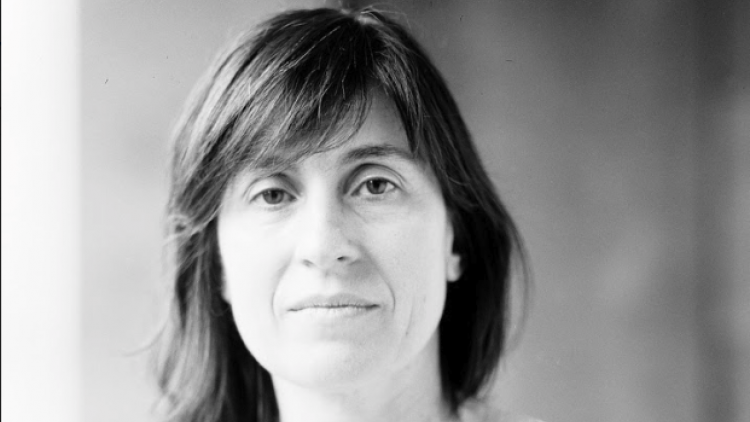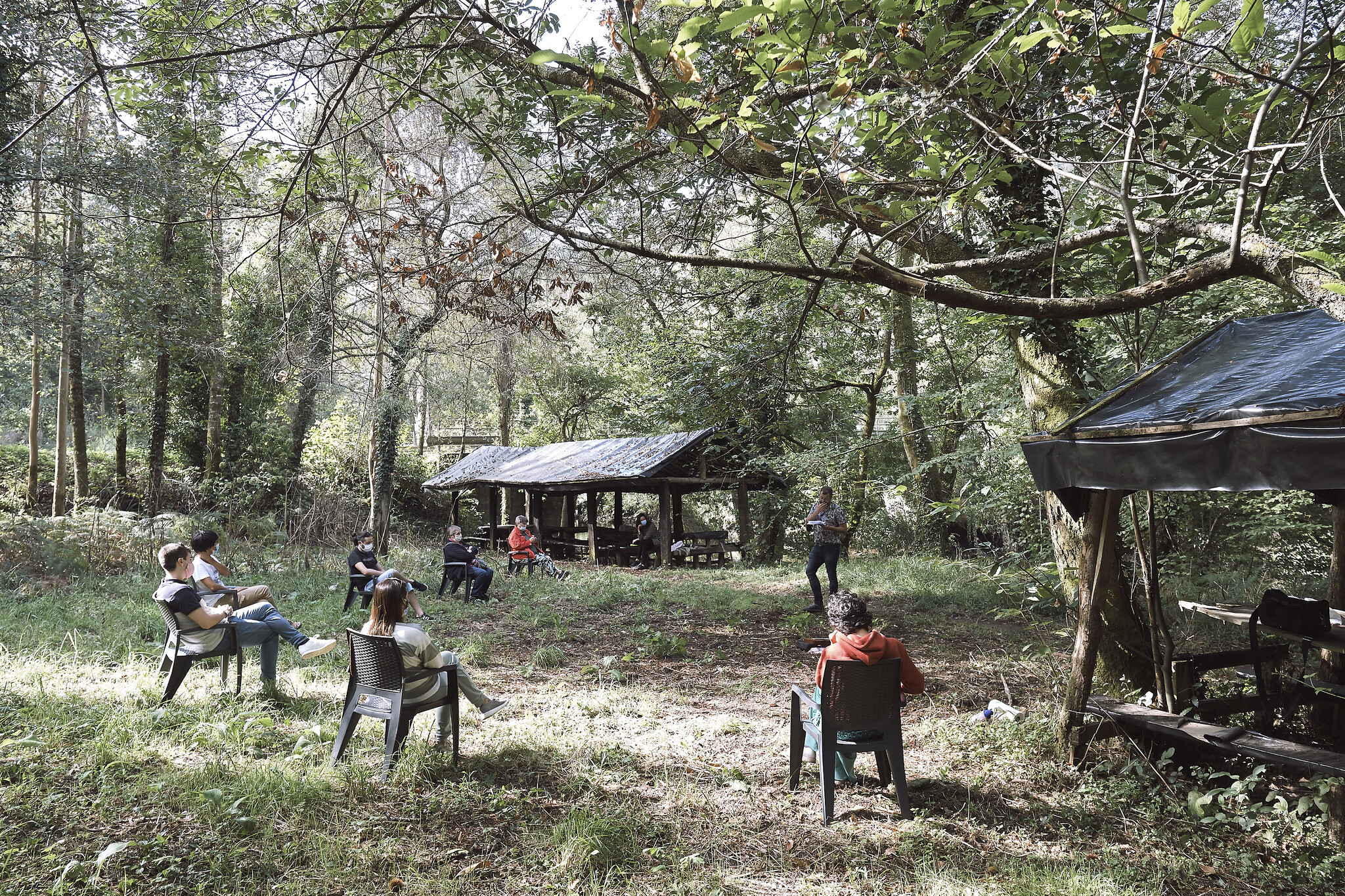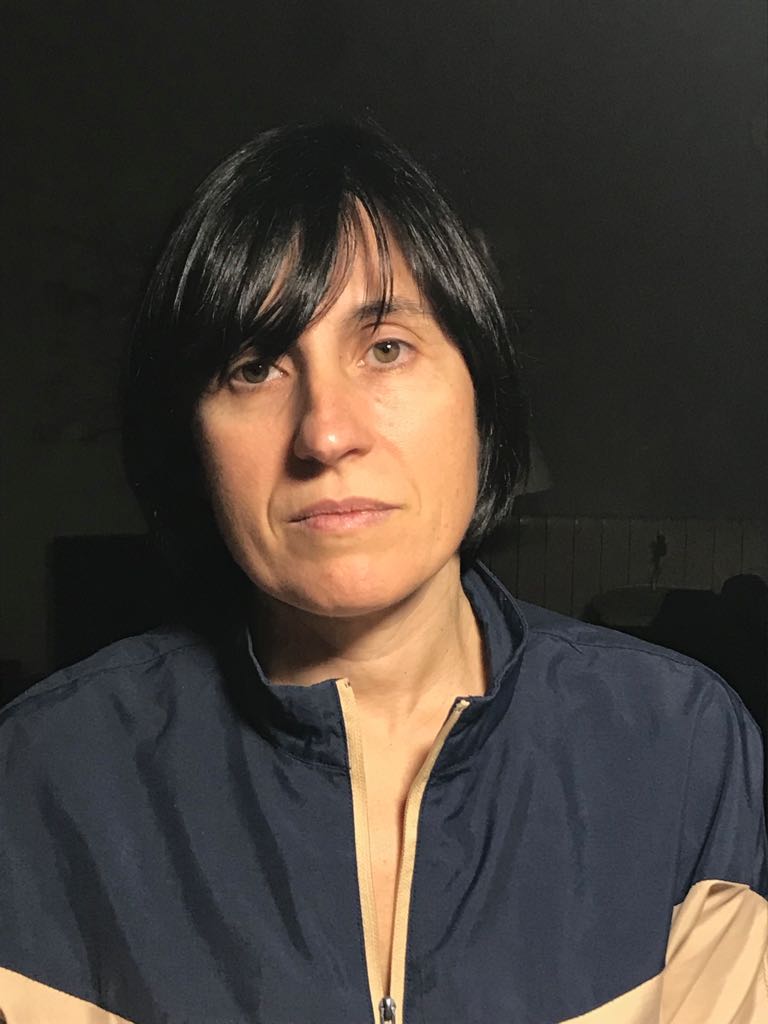“There’s something much more important at stake than reinstating public figures”

An interview with researcher and multidisciplinary artist Carme Nogueira (Vigo, 1970), who has been selected to develop the artistic project that will take shape in Betanzos.
An interview with researcher and multidisciplinary artist Carme Nogueira (Vigo, 1970), who has been selected to develop the artistic project in Betanzos, Galicia. The Concomitancia, called Legado Cuidado (Legacy Care) reflects on the historical legacy of the García Naveira brothers—specifically the Pasatiempo park—, and on contemporary philanthropic work.
How are you approaching the challenge of being in charge of the production of the Legado Cuidado artwork?
Carme Nogueira (CN): It’s a big challenge for several reasons. First of all, the site itself: it has a strong symbolic value and a special place in the Galician cultural imaginary. Secondly, there is the civil society behind the whole project. I’m used to working with communities, but not in an area of social advocacy as powerful as the Pasatiempo park.
Your career is very closely tied to research and interventions in public space. What are the tools you bring to tackle this project?
When we’re dealing with public space, there are always certain communities or groups of people who become very visible at a given moment. But there are also many other less evident levels of visibility.
I always try to put all my tools on the table and to approach projects with humility. You have to be open to all the things that can happen in the process, which is something I really like about Concomitentes, because that’s built in to your way of working.
When you first get to a place it’s difficult to let go of your pre-existing ideas, no matter how much you want to. That’s why it’s interesting to try to dialogue with all these layers.
How is the creative process with the citizen-commissioners and the mediator, Fran Quiroga, going?
Even though I’m no stranger to collaborating with communities, this project is a treat because some of the work is already done, I don’t have to start from scratch. On the other hand, it’s a bigger challenge because people’s wishes for the territory have been much more thoroughly thought out.
How was this commission or collective desire, which emerged during those years of mediation, transmitted and conveyed to you in words?
We met online and we also had a face-to-face meeting with part of the group. The commission was highly structured, they had put together a dossier that Fran shared with me, so I already had quite a good idea of the path their desire had taken. I think it’s a desire that goes beyond the physical—beyond that specific site—, and extends to the whole of Galicia.

The commission involves an intervention in a project and a site that is a very significant artistic legacy on a local, and almost national level. Do you see this as a burden or a strength?
It's a double-edged sword. Precisely because the project is challenging, there’s a greater risk of failure. Firstly because of the discourse that has formed around it, and the expectations that come with it. My point of view is that my work is a tool rather than an end. I don’t want to compete with what’s already there, but to create strategies that serve to highlight the importance of the place, or to talk about what’s happening there.
How do you see the relationship between your work, contemporary art, and a context of such historical weight and iconography?
The intervention will not take place in the area that has been declared a cultural heritage site (BIC). We’re going to work in the ruined, or lost part. My proposal will be along the lines of highlighting what has been “lost”, what is invisible, in both a real and an imaginary way.
This project highlights the lack of care for a community’s heritage. How will your work engage with that responsibility to care for and understand what already exists in the Pasatiempo park?
What matters most is for people to connect with the value of what is already there, in their region. It’s crucial to talk about the physical aspects, but also more abstract matters such as its use and significance. When something has meaning for the people who live in a place, then that will grow.
The government is also responsible for neglecting this cultural legacy.
Sometimes paradoxes come up when we talk about the public realm, such as the soccer field built over the “Popes’ Pond” in Pasatiempos park. That’s a metaphor for how decisions are sometimes made based on immediacy and maximising short-term profit.
How will you generate an artistic work despite the fact that what’s needed is a comprehensive restoration of the park?
This is a tricky issue and one that I’ve been reflecting on. I understand people thinking, “if there’s money, why not invest it in caring for what’s already there?”
I don’t know whether that money would solve the problem, and I don’t know whether the artwork I’m going to make will solve it either. I don’t think artists should have to respond to these kinds of issues in a practical and pragmatic way. But they should generate a new way of seeing things.
Art allows you to get inside places you could not otherwise enter. My idea isn’t to make an artwork that solves the problem of the Pasatiempo park, but to try to show that what’s at stake is much more important than restoring historical figures.
“What’s key is the whole process that leads us to the artwork. It’s a project that is open to all the opportunities that will shape that path”
In this sense, how do you think art helps us build society?
In art there’s no need to agree on everything in order to feel part of a community. It helps us reconcile different perspectives.
What’s key is the whole process that will lead us to the artwork. It’s a project open to all the opportunities will shape that path, to the voice of the land in which we are going to introduce the pieces… And I hope new voices that we haven’t been able to hear so far will appear along the way.
Can you give us a rough idea of what the artwork will be?
The idea is to generate small interventions in a series of sites, creating a kind of path or route. If we get the permits we need, we would like to restore one of the ruined elements of the lower part of the park, where there used to be a canal connected to the river and to the upper part, by means of bridges, grottos…
Water is fundamental in the park, and it’s an element that connects the Pasatiempo park with other works by the García Naveira brothers, such as the wash house. And we will be able to sit in the artwork, and play with it…

Looking back at your work, what projects from your past are most closely related to this process?
It’s always difficult to choose, but I’d say a project from 2007, Los Camiños, in a former porcelain factory in Vigo. It was also a place where there was something to conserve. and it was also located next to a river. There I worked alongside local residents, asking them what parts of the river should be preserved. This made it possible to reconstruct different stories, which ended up being structured around three key elements: the factory, the river, and the land. Around that time I also participated in other projects along similar lines, such as Qué facer coas nosas prazas, in which I made objects—models—that looked like benches.
What stage of the artistic process are you at now? What milestones are on the horizon?
I hope that my proposal will start up a dialogue about my approach to the land, and that the citizen-commissioners will share their vision so that we can settle on the details of this piece.
I have submitted a preliminary project. The next step, in March, will be to work with the citizen-commissioners to decide on the placement of the installations. We will also organise a meeting or a seminar, although I hope there will be various opportunities to work together.
The process should culminate with the installation in September, although we might get together two or three times over the summer, and carry out the installation communally.
What’s your opinion of this work as a way of strengthening the community bond around the care of an artwork?
Success would be for the artwork to lead people to the park itself, and for caring to emerge naturally as a result.
